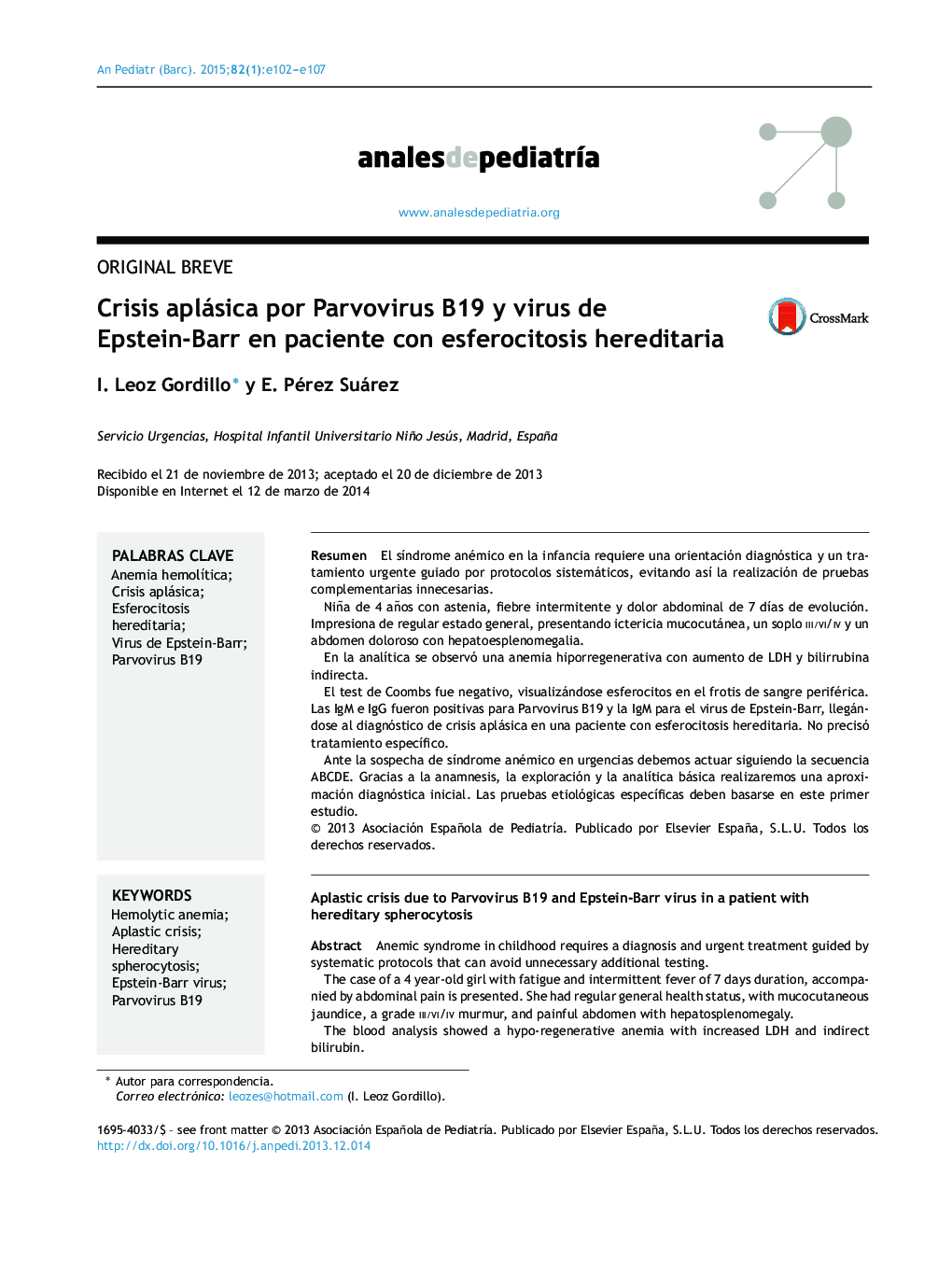| Article ID | Journal | Published Year | Pages | File Type |
|---|---|---|---|---|
| 4141452 | Anales de Pediatría | 2015 | 6 Pages |
ResumenEl síndrome anémico en la infancia requiere una orientación diagnóstica y un tratamiento urgente guiado por protocolos sistemáticos, evitando así la realización de pruebas complementarias innecesarias.Niña de 4 años con astenia, fiebre intermitente y dolor abdominal de 7 días de evolución. Impresiona de regular estado general, presentando ictericia mucocutánea, un soplo III/VI/iv y un abdomen doloroso con hepatoesplenomegalia.En la analítica se observó una anemia hiporregenerativa con aumento de LDH y bilirrubina indirecta.El test de Coombs fue negativo, visualizándose esferocitos en el frotis de sangre periférica. Las IgM e IgG fueron positivas para Parvovirus B19 y la IgM para el virus de Epstein-Barr, llegándose al diagnóstico de crisis aplásica en una paciente con esferocitosis hereditaria. No precisó tratamiento específico.Ante la sospecha de síndrome anémico en urgencias debemos actuar siguiendo la secuencia ABCDE. Gracias a la anamnesis, la exploración y la analítica básica realizaremos una aproximación diagnóstica inicial. Las pruebas etiológicas específicas deben basarse en este primer estudio.
Anemic syndrome in childhood requires a diagnosis and urgent treatment guided by systematic protocols that can avoid unnecessary additional testing.The case of a 4 year-old girl with fatigue and intermittent fever of 7 days duration, accompanied by abdominal pain is presented. She had regular general health status, with mucocutaneous jaundice, a grade III/VI/iv murmur, and painful abdomen with hepatosplenomegaly.The blood analysis showed a hypo-regenerative anemia with increased LDH and indirect bilirubin.The Coombs Test was negative, with spherocytes being observed in the peripheral blood smear. The IgM and IgG were positive for parvovirus B19 IgM and Epstein Barr virus, leading to the diagnosis of aplastic crisis in a patient with hereditary spherocytosis. No specific treatment was required.Under the suspicion of anemic syndrome in emergencies, the ABCDE sequence must be followed. Through the history, physical examination and basic laboratory tests, an initial diagnostic approach can be made. Specific etiological tests should be based on this first study.
